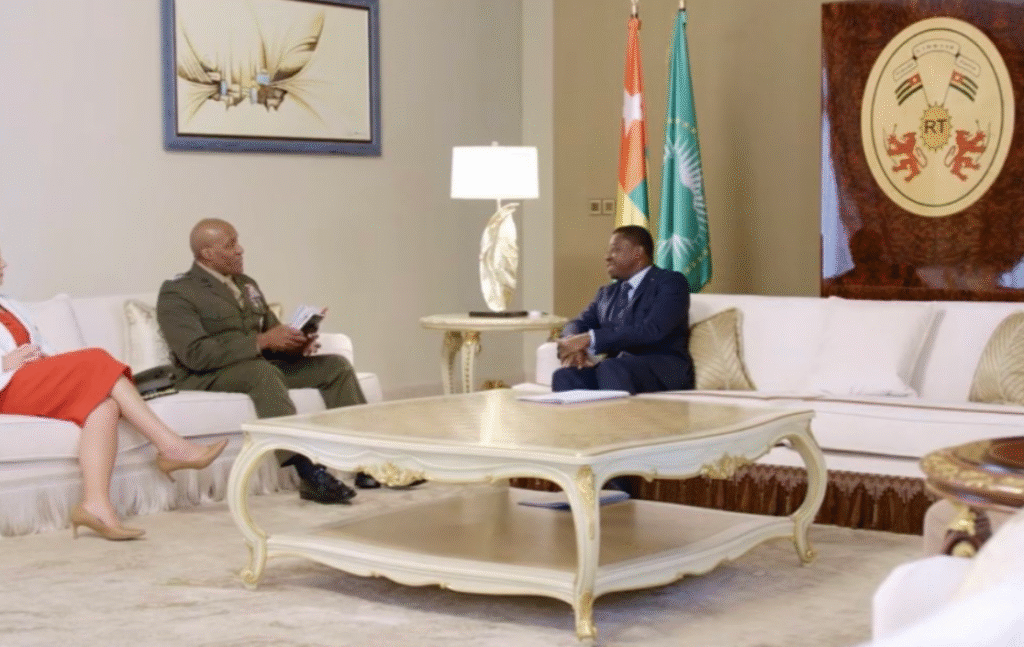The streets of Togo erupted in a historic moment as the nation witnessed the end of an era. For 51 years, the Gnassingbé dynasty had ruled with an iron grip, first under General Eyadéma Gnassingbé and then his son, Faure Gnassingbé. But in early October, the unthinkable happened—a people’s revolution, peaceful yet unstoppable, brought down one of Africa’s longest-standing political dynasties without a single shot fired.
Togo: The Opposition Mobilizes
The streets of Togo erupted in a historic moment as the nation witnessed the end of an era. For 51 years, the Gnassingbé dynasty had ruled with an iron grip, first under General Eyadéma Gnassingbé and then his son, Faure Gnassingbé. But in early October, the unthinkable happened—a people’s revolution, peaceful yet unstoppable, brought down one of Africa’s longest-standing political dynasties without a single shot fired.
It began with quiet murmurs in the presidential palace. A sealed envelope containing a draft resignation letter found its way to President Faure Gnassingbé’s desk. Within hours, the whispers spread—“Il va partir” (He will step down). By dawn, the news had reached every corner of Lomé. The opposition, long suppressed, saw their moment. On October 4th and 5th, thousands took to the streets, demanding the restoration of the 1992 constitution. They carried no weapons, only oil cans, gloves, and whistles. Their message was clear: the time for change had come.
The regime, sensing the shifting tide, tried to counter with its own show of strength. The ruling Union for the Republic party held a rally in support of Gnassingbé, drawing thousands. But the energy was different this time. The people were no longer afraid. In Sokodé, Kara, and Atakpamé, the youth chanted Gnassingbé’s name not in fear, but in defiance. Even the military, long the regime’s enforcer, hesitated. Officers held secret meetings, excluding palace officials. The once-unshakable foundation of the dynasty was cracking.
By October 6th, the streets of Lomé were alive with protest. Students, market women, taxi drivers—people from all walks of life—joined the march. There were no leaders, no organized calls to action. This was a spontaneous uprising, raw and unfiltered. The police, usually quick to suppress dissent, stood aside. One officer, captured on video, said simply, “Let them march. We have children too.”
The turning point came that evening. Colonel Wami Dossou, the Minister of Defense and a key regime loyalist, appeared on state television. In a stunning move, he resigned live on air. “My oath was to the Republic, not a surname,” he declared. The streets erupted in cheers. Dossou’s defection sent shockwaves through the military. Battalions refused orders. Commanders sent cryptic messages to the palace: “We follow Dossou.” The regime’s last pillar of support had crumbled.
Behind the palace walls, panic set in. Gnassingbé’s family urged him to fight back, but his younger sister, rarely involved in politics, offered a different perspective: “Maybe they just want you to listen.” Gnassingbé, watching the crowds from his window, realized the truth—the people were no longer afraid. The myth of the dynasty’s invincibility had been shattered.
France, long a backer of the regime, scrambled to respond. Macron’s team placed frantic calls to Gnassingbé, but the president refused to answer. In the Foreign Ministry, diplomats burned sensitive documents. The era of foreign interference was ending, and Togo was slipping from France’s grasp.
Then came the leak. A resignation letter, unsigned but unmistakably authentic, appeared online. “After 20 years, I step down… Togo deserves to breathe,” it read. The people needed no confirmation. They took to the streets again, this time in celebration. “C’est écrit!” (It’s written!), they chanted.
The regional response was swift. The Alliance of Sahel States (AES)—Mali, Burkina Faso, and Niger—issued a statement applauding Togo’s courage. “Africa is not a family business,” declared Burkina Faso’s Captain Ibrahim Traoré. The AES offered support for a democratic transition, signaling a broader rejection of Western influence in the region.
On October 7th, the unthinkable happened. Hundreds of thousands marched to the presidential palace. An elderly woman, barefoot and wrapped in the national colors, placed hibiscus flowers at the feet of the palace guards. One by one, the soldiers laid down their weapons. The gates swung open. There was no violence, no chaos—just an outpouring of joy. People sang, cried, and embraced. After 51 years, the palace belonged to the people.

That evening, Gnassingbé addressed the nation. “I will step down,” he said, his voice steady. “Not out of fear, but because leadership is knowing when to let go.” The streets erupted in celebration. Church bells rang. Drums pounded. After decades of repression, Togo was free.
Now, the hard work begins. The opposition must transition from protest to governance. The military, though neutral in the revolution, remains a powerful force. And the AES’s involvement raises questions about Togo’s future alliances. But for now, the nation breathes easy. The revolution was peaceful, the victory undeniable. After 57 years, the people have spoken—and Togo will never be the same.
Disclaimer:
The information presented in this blog is based on sources available at the time of writing and aims to provide an objective overview of the ongoing protests in Togo. The situation is dynamic and may evolve rapidly. Readers are advised to verify facts from official channels and reputable news sources. This blog does not endorse any political party or group involved and is intended solely for informational purposes. The author and publisher disclaim any liability for actions taken based on the content of this blog.

